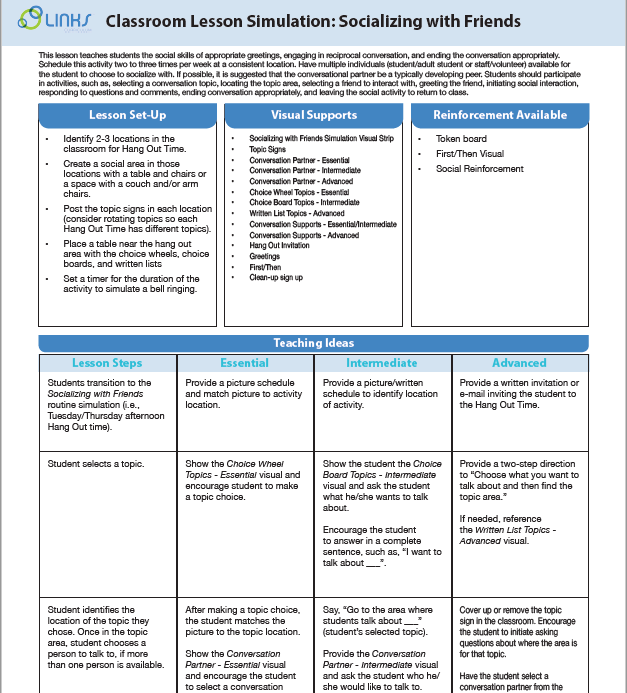Applied Behavior Analysis for Your Classroom
Are your dreams plagued by visions of students dropping to the floor or running out of the learning environment? Do you wonder how you are going to provide quality instruction, manage challenging behaviors, and monitor students’ progress? If this is you, then you must be a teacher of middle and high school students in a special education classroom. Thankfully, it’s easy to use a variety of behavior analytic strategies in any classroom to achieve long-lasting positive results in the areas of skill instruction and behavior management.
The National Autism Center has done the painstaking research to identify the most effective strategies to implement with students on the autism spectrum. As reported in the National Standards Project, Phase II (2015), behavioral interventions were the largest category of treatments and strategies shown to demonstrate their effectiveness with students with autism. The Links Curriculum incorporates a variety of those behavioral strategies, including but not limited to, modeling/imitation, repeated practice opportunities, use of task analysis, reinforcement, choice-making, and chaining of complex skills. All of these strategies can be used as antecedent strategies to set up our students for success in the classroom and other settings. As educators, we want to focus on antecedent strategies because they can prevent challenging behaviors from occurring, they act immediately on the environment, and they help us set up learning environments tailored to each students’ needs (Kern & Clemens, 2007).
One of the most pivotal antecedent interventions involves matching students’ instruction to their learning needs. This way, we avoid asking students to perform skills that they are not yet prepared for, and we keep them engaged in meaningful activities to prevent boredom. Matching instruction to student level goes a long way toward warding off unwanted behavior issues!
In the Links curriculum, we give you a tool to help you identify the skills students have and those they don’t, as well as a scope and sequence to help them achieve learning objectives. The Links Lesson Assessment consists of two parts that target a range of skills, including readiness skills (e.g., imitation), all the way to using a traditional written schedule and taking public transportation to work and community sites. In middle and high school, it is quite common for students to have more advanced skills in functional academics (e.g., identifying money) than in expressive communication. The curricular areas are independent of one another, so feel free to move on to Part 2 of the Lesson Assessment in a given category if your students’ skills are taking you there!
Preparedness is not only an important antecedent strategy in emergency situations, but it’s critical in educational settings as well. If you’re short on ideas and/or time to get materials prepared for your students, please spend some time checking out all of the Featured Routines now available under the “Featured Routines” tab on your classroom homepage. Our latest rollout highlights current events and includes small group activities, independent work file folders, and social studies lessons all tied to the Olympics! Be on the lookout for our next Featured Routine, Socializing with Friends, coming to a Links account near you in mid-September!
References
Kern, L. & Clemens, N.H. (2007). Antecedent strategies to promote appropriate classroom behavior. Psychology in the Schools, 44, pp. 65-75.
National Autism Center. (2015). Findings and Conclusions: National Standards Project, Phase II. Randolph, MA: National Autism Center.


